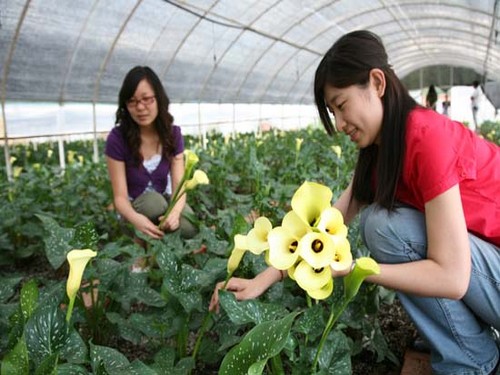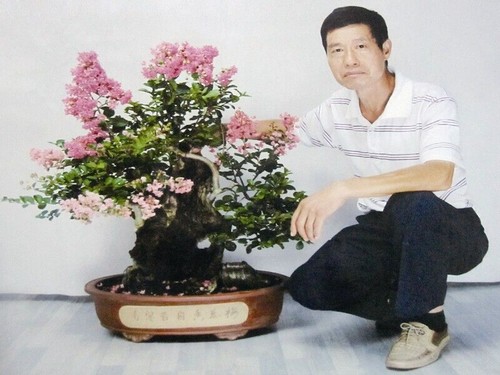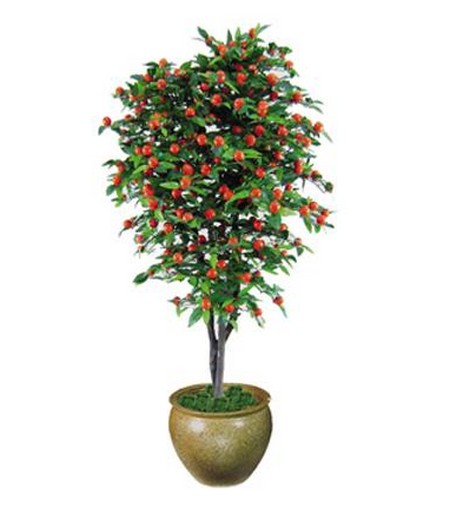Propagation technique of potted calla
Colored calla lilies are now usually sold as single pots or pots of high-grade potted flowers. if the technical problems are solved, colored calla lilies still have some room for development in the small potted market in the future. Jinzhou ball has the advantage of multi-flower and strong disease resistance, which is more suitable for the production of small potted products with a diameter of 12 cm to 14 cm, such as "California Red", "lipstick", "California Sunshine" and so on. 3 months is a production cycle, which is in line with the rhythm of fast production and fast sale of small potted plants, so the market potential of colored calla lilies is still great in the future. Here's a little bit about its breeding techniques:

Ramet:
After the main flowering stage or dormant period, dig out the tubers of the tufted strong mother plant, according to the size of the original tuber and the number of bud points, cut a clump into 2-3 clumps (each clump with 2-3 bud points), plant separately, manage normally, and blossom in 3 months.
Sub-ball:
Dig out the dormant tubers, and after the normal ramet, you can cut off some smaller tubers. These small tubers need to be cultivated in the open field for 1-2 years before they can be used as flowering balls. Before freezing in autumn, make the bed and cultivate the seed ball with ordinary garden soil, the seed ball grows slowly, if you change to the culture medium, most of the seed ball can form a flowering ball in the same year. Perlite (or coarse sand), humus and peat were used in the culture medium.
In addition, when planting bulbs, diammonium phosphate 10Kg and ferrous sulfate 1Kg should be applied to each 100m2 culture bed. Either a high bed or a low bed is fine. In early spring, planting bulbs should be cultivated as soon as possible after the soil is thawed. The planting density of seed balls above 1cm is 10cm × 10cm, the depth is 5cm, which is smaller than that of 1cm, the density is about 5cm × 5cm, and the depth of soil cover is 2-3cm. After cultivation, water should be irrigated in time to ensure adequate water supply, and chemical fertilizer should be applied every 10-15 days when the plant enters the vigorous growth period. 0.5% aqueous solution should be prepared according to the complete fertilizer of nitrogen, phosphorus and potassium at 1:1:1.
Bulbs also have high-temperature dormancy habits, dormancy period to reduce or even stop the supply of water and fertilizer. Shading nets with a shading rate of 30%, 50%, or mulches such as pine needles and fallen leaves of broad-leaved trees can also be used to reduce soil temperature to ensure a longer growing season and facilitate the growth of bulbs. If there is a flower stem in the growing period, it should be removed as soon as possible to concentrate nutrients for tuber growth. To autumn or summer high heat season, when the aboveground parts dry, pilling graded storage.
Tissue culture:
The explants used in tissue culture and propagation of calla are tender leaves and tubers with buds. The culture conditions were as follows: light intensity 1000-1500lx, light time 12-16 h, temperature 15-25 ℃. Induction medium: MS+BA1mg/L+NAA0.1mg/L subculture medium: MS+BA5-10mg/L+NAA0.2-0.5mg/L rooting medium: 1/2MS+IBA1-2mg/L when the root system of tissue culture seedlings grew to 1-2cm, open the bottle mouth to refine the seedlings for 2-3 days and then go to the pot, the substrate was fully sterilized perlite and peat soil 1:1 mixture. Then put the pot under the plastic shed to moisturize (relative humidity 90% Mel 100%), heat preservation (temperature about 20 ℃) for 7 days, then remove the mulch, normal maintenance, about 1 year, the seedlings can blossom.
Sow:
Calla lilies can be sowed and propagated, but because of the low natural seed setting rate, the seeds are not easy to be harvested. If sowing and propagation, strong mother plants can be selected for artificial pollination, and the seeds can be harvested after maturity. It was sown immediately after harvest, and the optimum temperature for germination was about 20 ℃. The buds were unearthed in 4 weeks and transplanted when 2-3 true leaves were transplanted. Under excellent cultivation and management conditions, flowering bulbs can be developed in two years.
Time: 2019-06-12 Click:
- Prev

Seedling raising method of crape myrtle bonsai
Each kind of flower is blooming its own beauty, each leading a coquettish side. Like crape myrtle, it avoids the spring when a hundred flowers compete for beauty and chooses to bloom in summer and autumn. It has beautiful trees, buckled branches and colorful flowers, so it is worth watching. Crape myrtle has many kinds and different postures. Because it is easy to manage, the branches are soft.
- Next

Pruning method of kumquat bonsai
There is a big difference in cultivation methods between potted kumquat and garden kumquat, and the pruning method also has its own characteristics. After March, most of the fruits of kumquat fall off naturally, and the remaining fruits are picked manually to save nutrients. At the same time, dense branches, cross branches, some overgrown branches and no light branches in the inner chamber are removed.
Related
- Fuxing push coffee new agricultural production and marketing class: lack of small-scale processing plants
- Jujube rice field leisure farm deep ploughing Yilan for five years to create a space for organic food and play
- Nongyu Farm-A trial of organic papaya for brave women with advanced technology
- Four points for attention in the prevention and control of diseases and insect pests of edible fungi
- How to add nutrient solution to Edible Fungi
- Is there any good way to control edible fungus mites?
- Open Inoculation Technology of Edible Fungi
- Is there any clever way to use fertilizer for edible fungus in winter?
- What agents are used to kill the pathogens of edible fungi in the mushroom shed?
- Rapid drying of Edible Fungi

